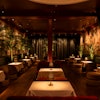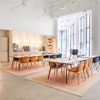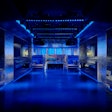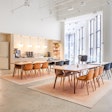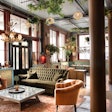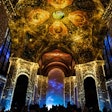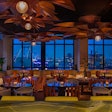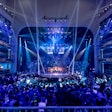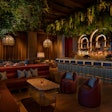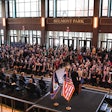Echoing the Dia Art Foundation’s tradition of championing minimalist and conceptual works, the organization’s fund-raiser took on the look of an installation with imaginative ideas. Situated on the 52nd floor of the new 7 World Trade Center building, the event interacted with the space’s expansive city views and reflections of lights on the glass, and also involved introspective plays on geometry. Laura Raicovich, deputy director of the foundation, oversaw the fund-raiser, along with Melissa Feldman of MF Productions, who produced the event.
To give the space its geometrical look, event designer Susan Holland worked with circles and squares, which appeared in the shapes of tables (there were both). Projections of the shapes appeared on the floor and filled the center of dinner tables. Light glowed through the sides of the table coverings, and in lieu of traditional centerpieces, projections that matched the corresponding shapes of each table shone down from above.
—Mark Mavrigian
Posted 11.15.06Photos: Nicole Villamora for BiZBash
Related Stories
Whitney Considers Downtown Location
P.S. 1 Stages Arty High School Homecoming
Italian Fashions Cover Dizzying Dia Tables
Dia Art Gala Lights Up With Neon
To give the space its geometrical look, event designer Susan Holland worked with circles and squares, which appeared in the shapes of tables (there were both). Projections of the shapes appeared on the floor and filled the center of dinner tables. Light glowed through the sides of the table coverings, and in lieu of traditional centerpieces, projections that matched the corresponding shapes of each table shone down from above.
—Mark Mavrigian
Posted 11.15.06Photos: Nicole Villamora for BiZBash
Related Stories
Whitney Considers Downtown Location
P.S. 1 Stages Arty High School Homecoming
Italian Fashions Cover Dizzying Dia Tables
Dia Art Gala Lights Up With Neon
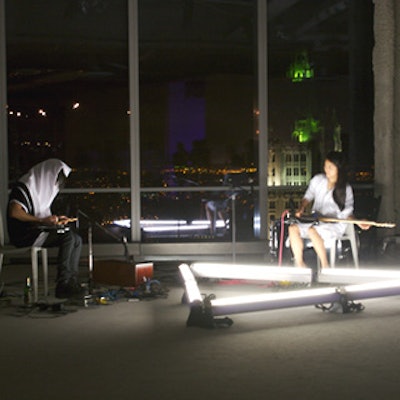
During cocktails, the collaborative multimedia group New Humans performed experimental sound compositions amid its site-specific triangular light sculpture.

Strohmeier Lighting projected a minimalist pattern of squares and circles on the floor.
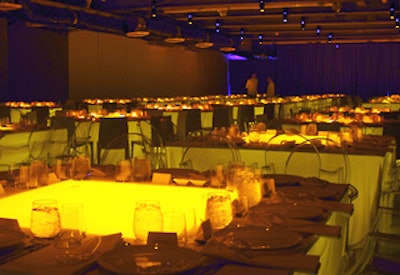
A grid of square and circular tables lined the dining space. Solid circles of light shone on circular tables, solid illuminated squares lit square tables, and light emanated through the table covering.
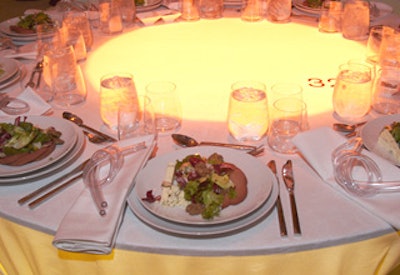
Holland used twisted electrical tubing as “conceptual napkin rings”—the knotted items lay on top of the napkins rather than surrounding the fabric. When guests removed their napkins, they could place the clear plastic forms into the illuminated center of the tables, where they would interact with the light.


